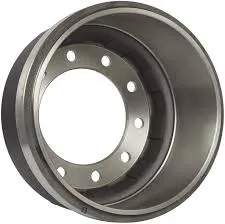difference between disk brakes and drum brakes
Understanding the Difference Between Disk Brakes and Drum Brakes A Comprehensive Overview
Braking systems are crucial components of any vehicle, designed to ensure safety and control while driving. Among the various types of braking systems, disk brakes and drum brakes are the most common. Each type has its unique characteristics, advantages, and disadvantages. Understanding the differences between disk brakes and drum brakes is essential for anyone looking to maintain their vehicle or make informed decisions when purchasing a new car.
Basic Structure and Mechanism
At the core of the differences between disk and drum brakes lie their structures and how they operate. Disk brakes consist of a flat, circular disc (the rotor) that spins with the wheel. When the driver applies the brakes, brake pads are pressed against the rotor by a caliper, generating friction and bringing the vehicle to a stop. This design allows for efficient heat dissipation, minimizing the risk of brake fade during prolonged use.
In contrast, drum brakes consist of a hollow cylinder (the drum) that rotates with the wheel. Inside the drum, brake shoes are pressed outward against the drum's inner surface when the brakes are applied. This creates friction, slowing the vehicle down. While drum brakes have been popular in older vehicles and certain applications due to their simplicity, they tend to retain heat more than disk brakes, potentially leading to reduced effectiveness over time.
Performance and Heat Dissipation
One of the primary advantages of disk brakes is their superior performance, especially in high-demand situations. Disk brakes are less prone to overheating due to their open design, which allows for better airflow and cooling. This is crucial for high-performance vehicles or those that frequently face severe braking conditions, such as in sports cars or heavy trucks.
Drum brakes, while effective for average driving conditions, can experience brake fade when overheated, leading to reduced stopping power. This heat buildup occurs because the enclosed design of the drum retains heat, making it less effective during heavy braking scenarios. Consequently, vehicles that require consistent, high-performance braking often utilize disk brakes in the front and sometimes rear.
Weight and Cost Considerations
difference between disk brakes and drum brakes

When considering weight and cost, drum brakes tend to have an advantage over disk brakes. Drum brakes are typically lighter and cheaper to manufacture, making them a cost-effective choice for many budget-friendly vehicles. They're commonly used in the rear of economy cars and lightweight vehicles.
However, the growing emphasis on performance and safety has led manufacturers to increasingly adopt disk brakes, especially on the front wheels, where more braking force is required. Disk brakes, while generally more expensive to produce and maintain, provide more consistent performance and are often perceived as a more modern and reliable option.
Maintenance and Longevity
In terms of maintenance, disk brakes offer easier inspection and replacement compared to drum brakes. Disk brakes reveal wear on the brake pads and rotors, allowing drivers and mechanics to easily assess their condition. Additionally, brake pad replacement is typically straightforward.
On the other hand, drum brakes often require more extensive disassembly for inspection and maintenance. This complexity can lead to higher labor costs when servicing drum brakes, and their enclosed design may lead to issues with moisture and rust, affecting their longevity and effectiveness over time.
Conclusion
In summary, both disk brakes and drum brakes have their respective advantages and disadvantages, and the choice between the two often depends on the specific requirements of the vehicle, driving conditions, and personal preferences. Disk brakes are favored for their superior performance, heat dissipation, and easier maintenance, making them a popular choice for high-performance vehicles and modern cars. Drum brakes, while still relevant in certain applications, are generally found on more economical vehicles.
Ultimately, understanding the differences between disk and drum brakes will empower vehicle owners to make informed decisions regarding maintenance, upgrades, and purchases, ensuring their vehicle remains safe and reliable on the road. Whether you choose the reliability of disk brakes or the cost-effectiveness of drum brakes, knowledge of their differences will help you navigate the world of automotive braking systems effectively.
-
The Power and Reliability of Brake DrumsLajmeAug.27,2025
-
The High-Quality Truck Brake DrumsLajmeAug.27,2025
-
Quality Brake Drums for Reliable PerformanceLajmeAug.27,2025
-
Get the Quality Semi Trailer Brake Drums for Your FleetLajmeAug.27,2025
-
Everything You Need to Know About Brake DrumsLajmeAug.27,2025
-
Enhance Your Vehicle's Performance with Reliable Brake DrumsLajmeAug.27,2025
-
Truck Drum Brake Spring Replacement ProcedureLajmeAug.22,2025


